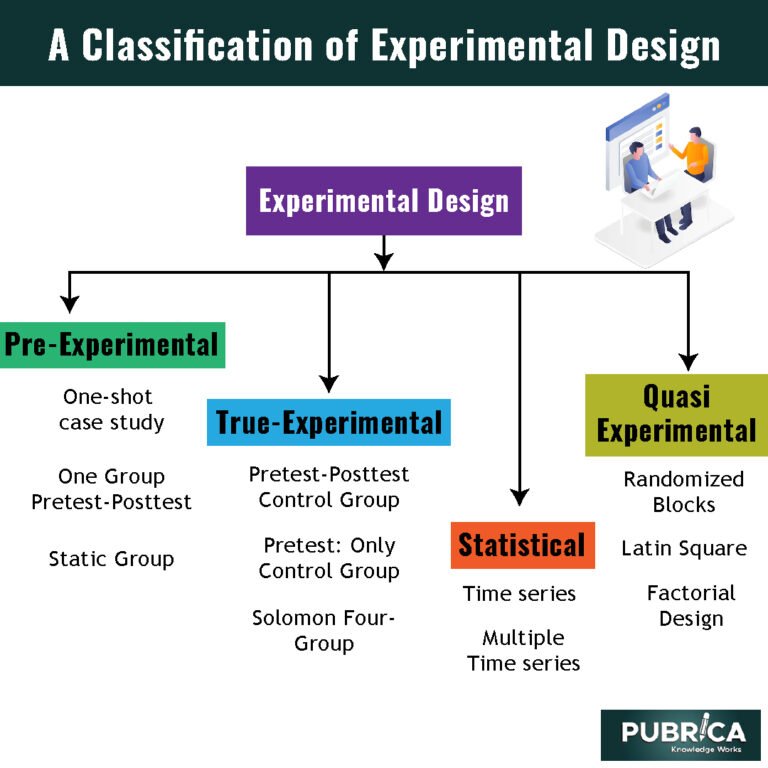Experimental design serves as the backbone of scientific inquiry, weaving together various methodologies and principles to facilitate systematic investigation. It encompasses an array of strategies that enable researchers to explore relationships between variables and mitigate unintended influences that may skew results. One cannot help but marvel at the intricacies involved in crafting a robust experimental design; it is not merely a procedural framework, but the very essence of how knowledge is constructed in the empirical realm.
A pivotal observation in the realm of experimental design is its universality across diverse fields—be it psychology, medicine, education, or even marketing. Each discipline harnesses its principles to extract meaningful insights. This phenomenon propels our fascination with experimental methods, hinting at a deeper curiosity about how structured inquiry can unravel complexities inherent in human experience and the natural world.
At the core of experimental design lies the concept of causality. Researchers aim to establish cause-and-effect relationships, a pursuit that necessitates meticulous planning. Therefore, one of the foundational components of any trial is the clearly defined hypothesis. This statement not only guides the research endeavor but also ensures that the investigation remains focused. A well-articulated hypothesis offers clarity on what is being tested and serves as the linchpin for interpreting results.
Next, one must consider the significance of variables. In any experiment, variables are categorized into independent, dependent, and confounding types. The independent variable is the factor manipulated by the researcher, while the dependent variable is the outcome measured. Confounding variables, on the other hand, are extraneous factors that could inadvertently influence the result. The careful identification and control of these variables determine the validity of the experimental findings. Researchers often employ randomization and blinding techniques to safeguard the integrity of their results from potential biases introduced by confounding variables.
Randomization, as a crucial aspect of experimental design, enhances the reliability of results by ensuring that each participant has an equal chance of being assigned to any group. This minimizes selection bias and ensures that the groups are comparable across known and unknown factors. Further augmenting this rigor is the practice of blinding, where either the subjects, the researchers, or both remain oblivious to which participants are assigned to which group. This stratagem guards against placebo effects and researcher biases, engendering a more objective assessment of the outcomes.
Sample size is yet another fundamental element in experimental design. Determining the appropriate number of participants is essential to achieving statistical power, allowing researchers to discern true effects from random variation. A sample that is too small may lead to inconclusive results, while one that is overly large can consume unnecessary resources and complicate analysis. Thus, statisticians often employ power analysis before commencing a study to ascertain the ideal sample size necessary for robust findings.
The choice of appropriate controls is also critical in experimental trials. Control groups, which do not receive the treatment, serve as benchmarks against which the experimental group’s outcomes are compared. This helps isolate the effects of the independent variable. In addition to this traditional static approach, there exist dynamic control methodologies that adapt based on ongoing results, beneficial in long-term or complex studies.
It is essential to carefully consider data collection methods as well—how observations are recorded can dramatically influence findings. Quantitative approaches, encompassing structured surveys and statistical analyses, facilitate numerical insights that can be generalized to larger populations. Conversely, qualitative methods like interviews and case studies can unveil the richness of human experience, offering depth that numbers alone may obscure. A mixed-methods approach often bridges these two worlds, providing a comprehensive understanding of the phenomenon under investigation.
Moreover, it is imperative to consider ethical implications in experimental design. Adhering to ethical standards protects participants’ rights and ensures the integrity of the research. Institutional Review Boards (IRBs) often oversee the ethical considerations involved, necessitating that the benefits outweigh any potential risks to participants. This moral obligation reinforces trust in research, an essential element for societal acceptance of scientific findings.
Data analysis and interpretation represent the culmination of the experimental journey. The application of statistical tools allows researchers to discern patterns, test hypotheses, and draw conclusions from their data. However, data interpretation must be approached with caution. Engaging with the results critically is essential; overgeneralizing findings or failing to consider alternative explanations can lead to erroneous conclusions. Transparency in reporting enables others to replicate or challenge findings, which is crucial for the advancement of knowledge.
Ultimately, the allure of experimental design extends beyond mere methodology; it embodies the human quest for understanding. It is a disciplined exploration of the unknown, harnessing the power of structured inquiry to unveil truths hidden beneath the surface of observable phenomena. As we continue to navigate an intricate landscape of variables and complexities, the principles of experimental design will remain paramount, guiding us towards deeper insights and informed decision-making across myriad domains.
